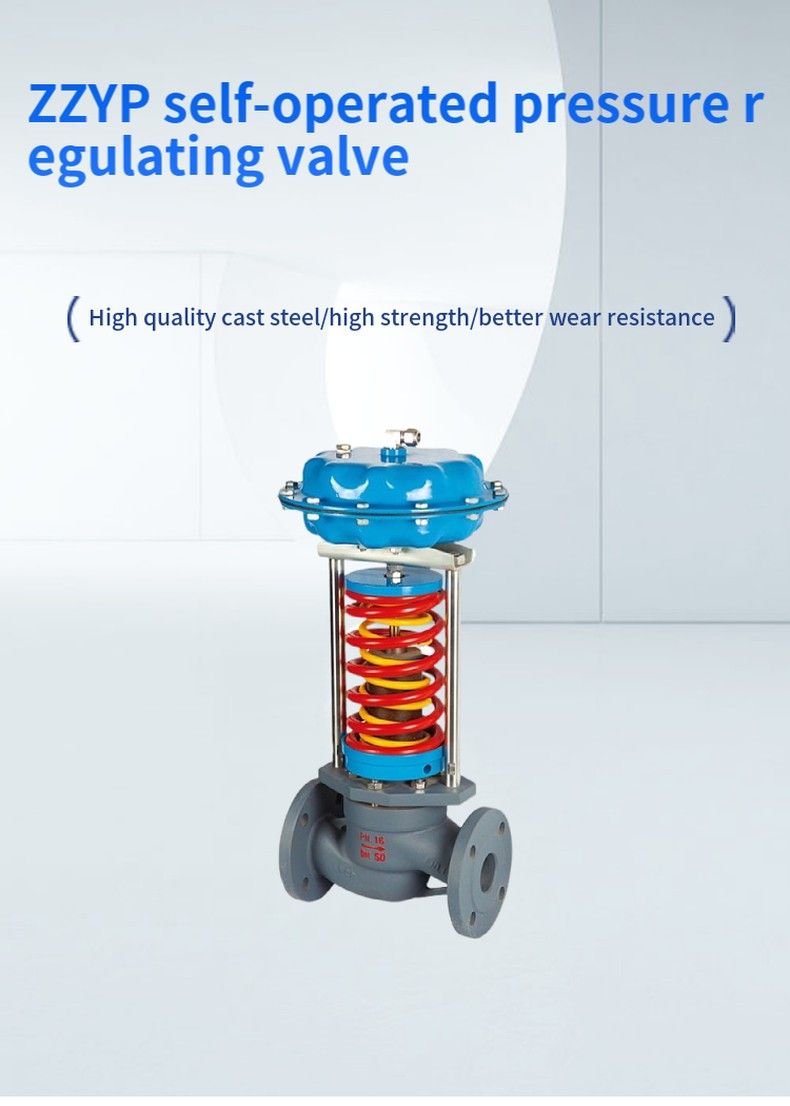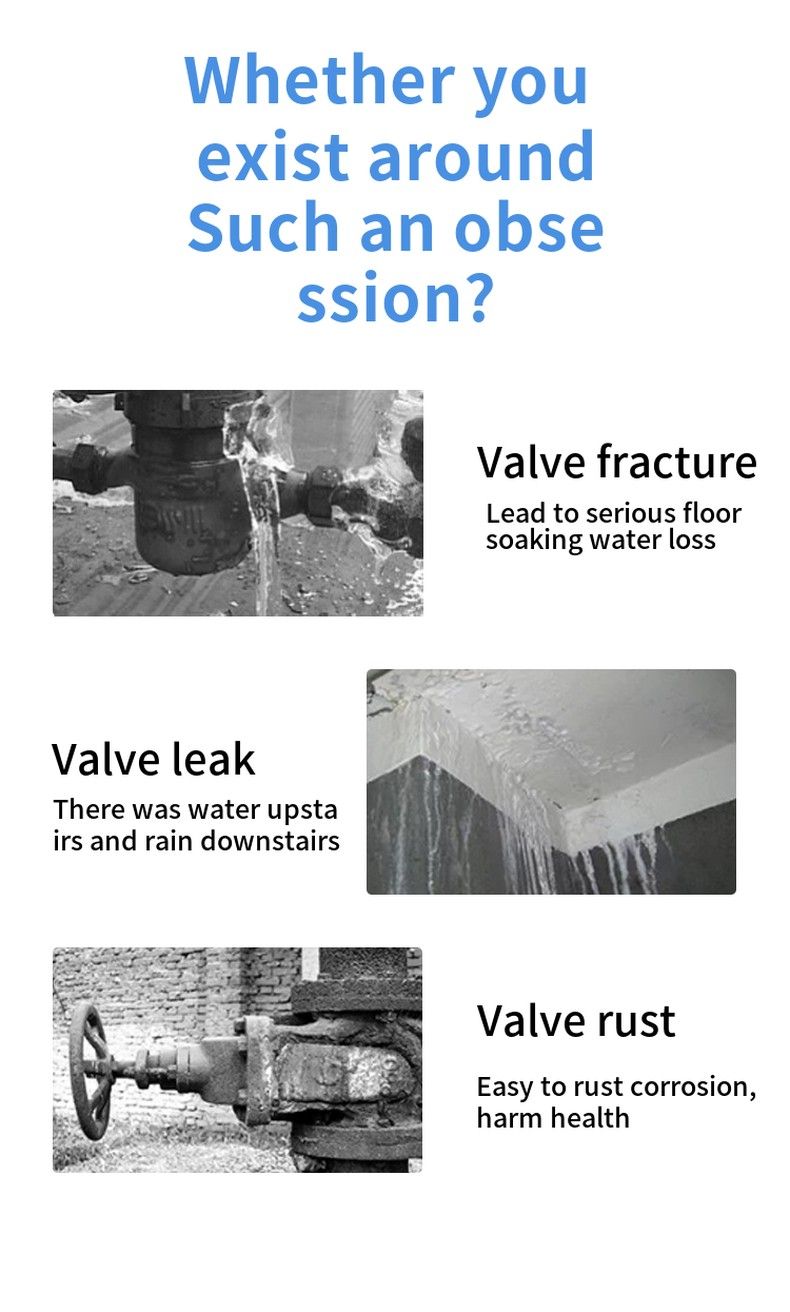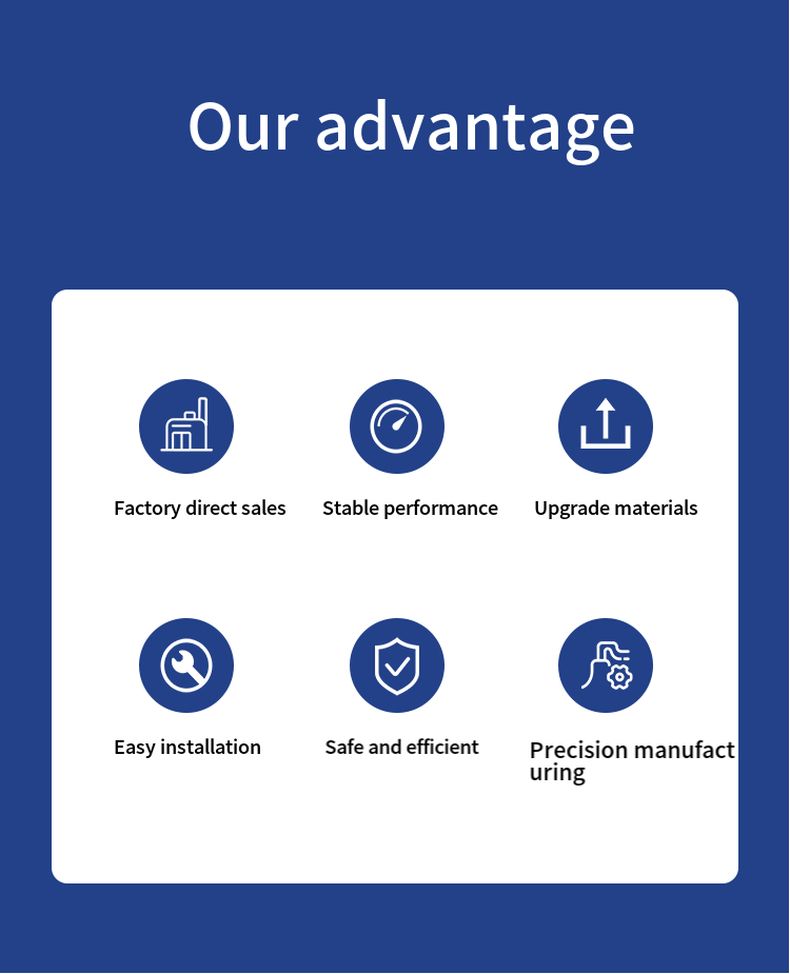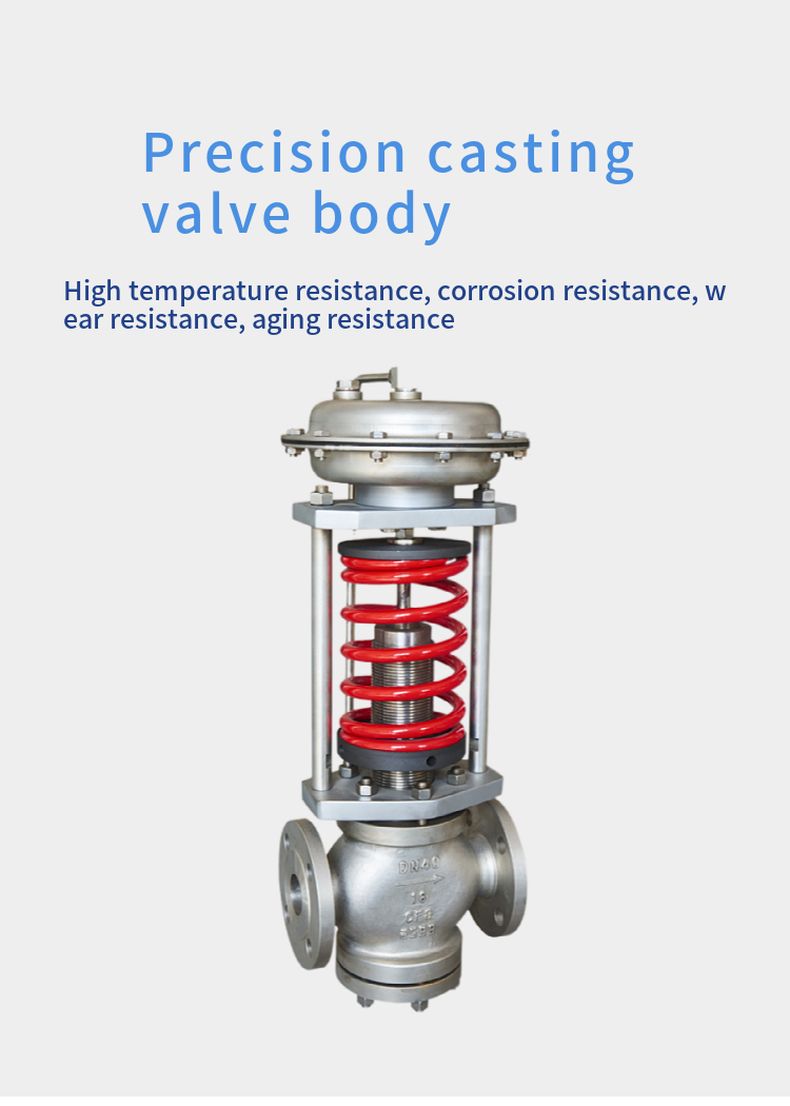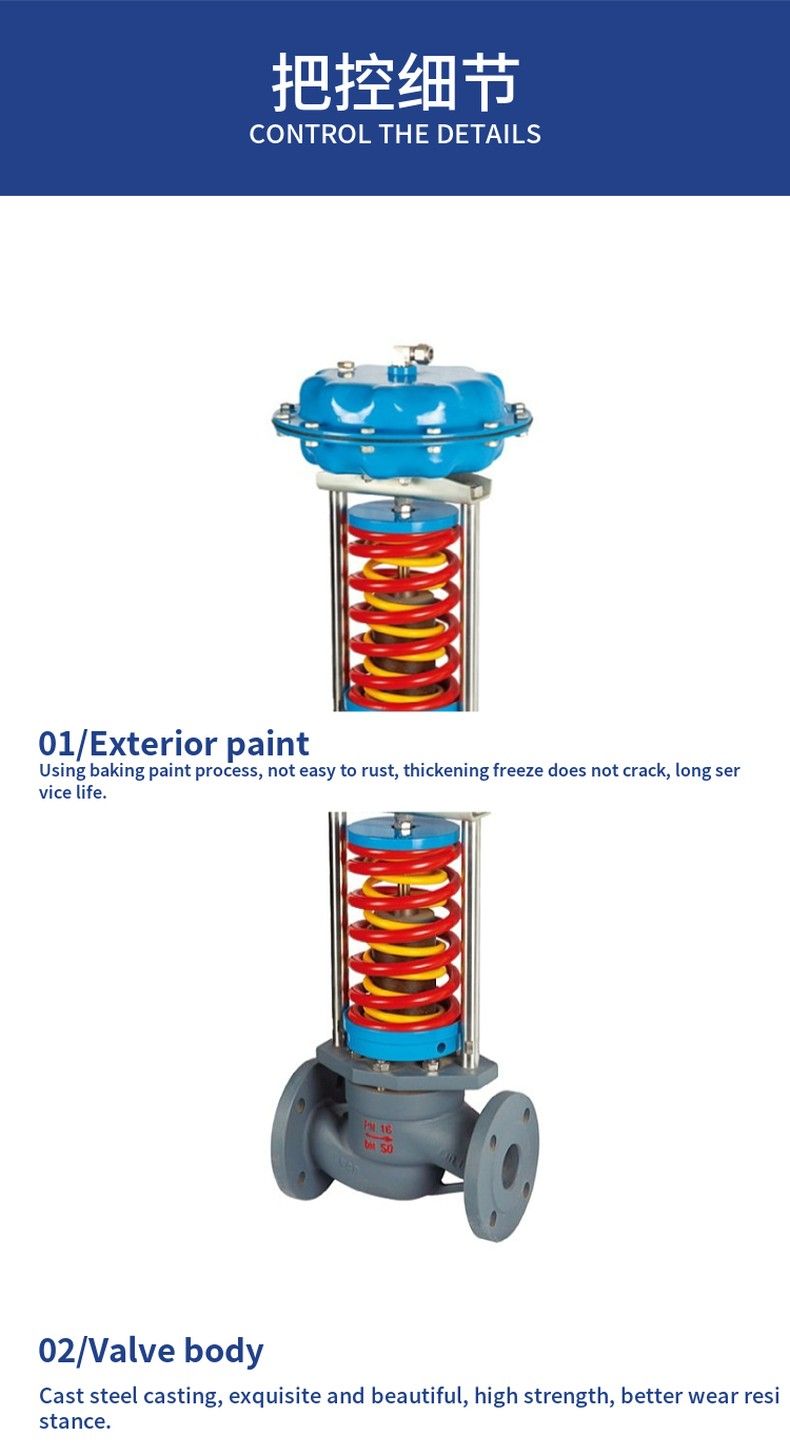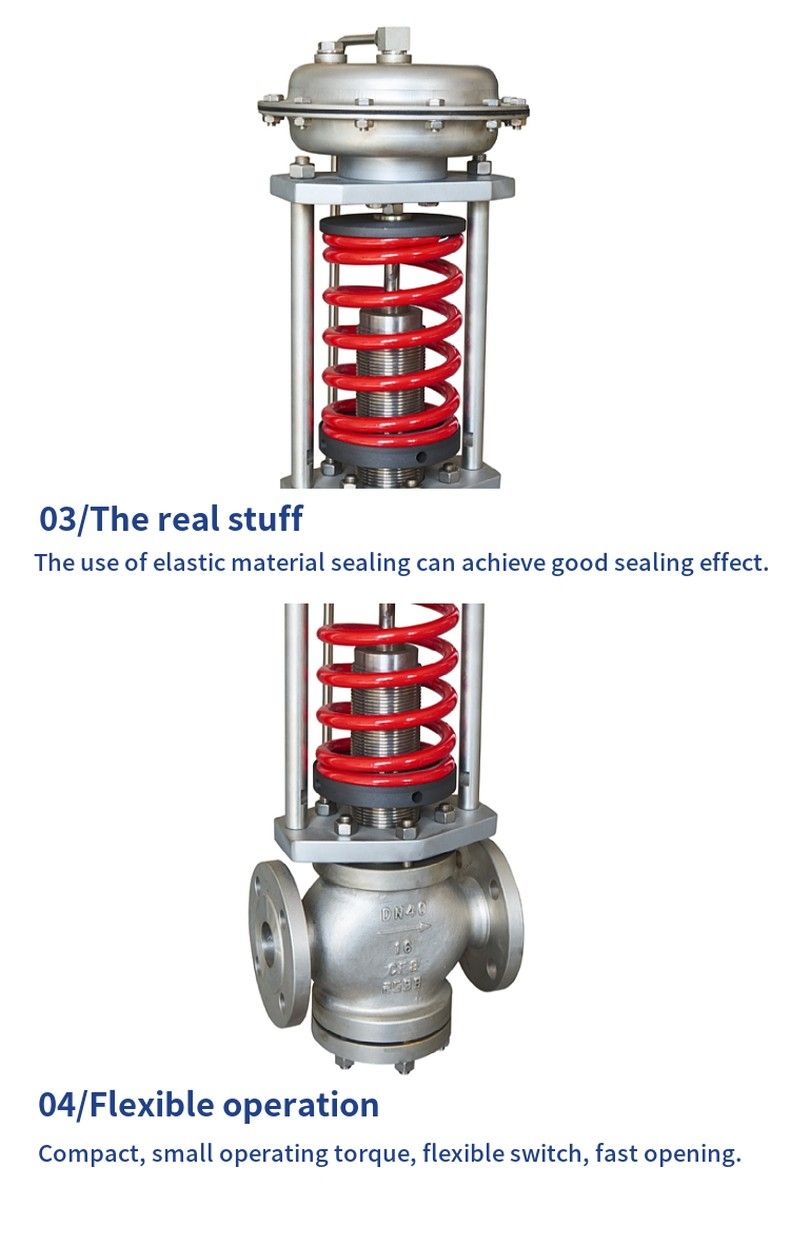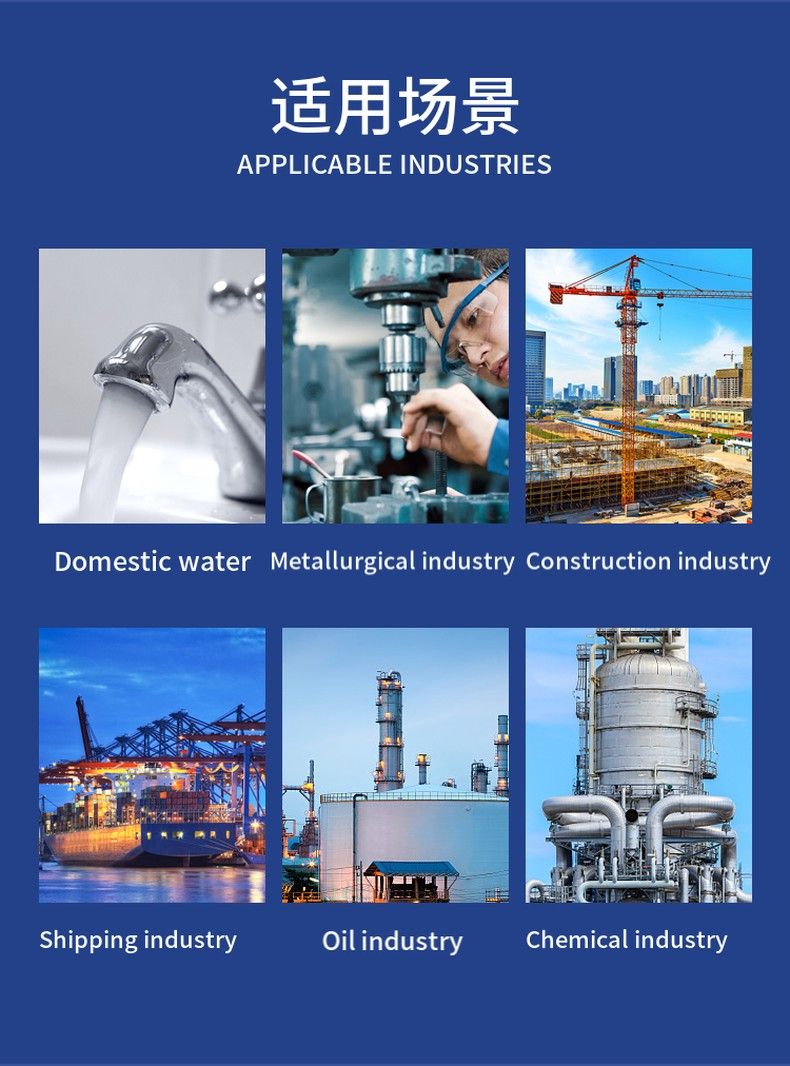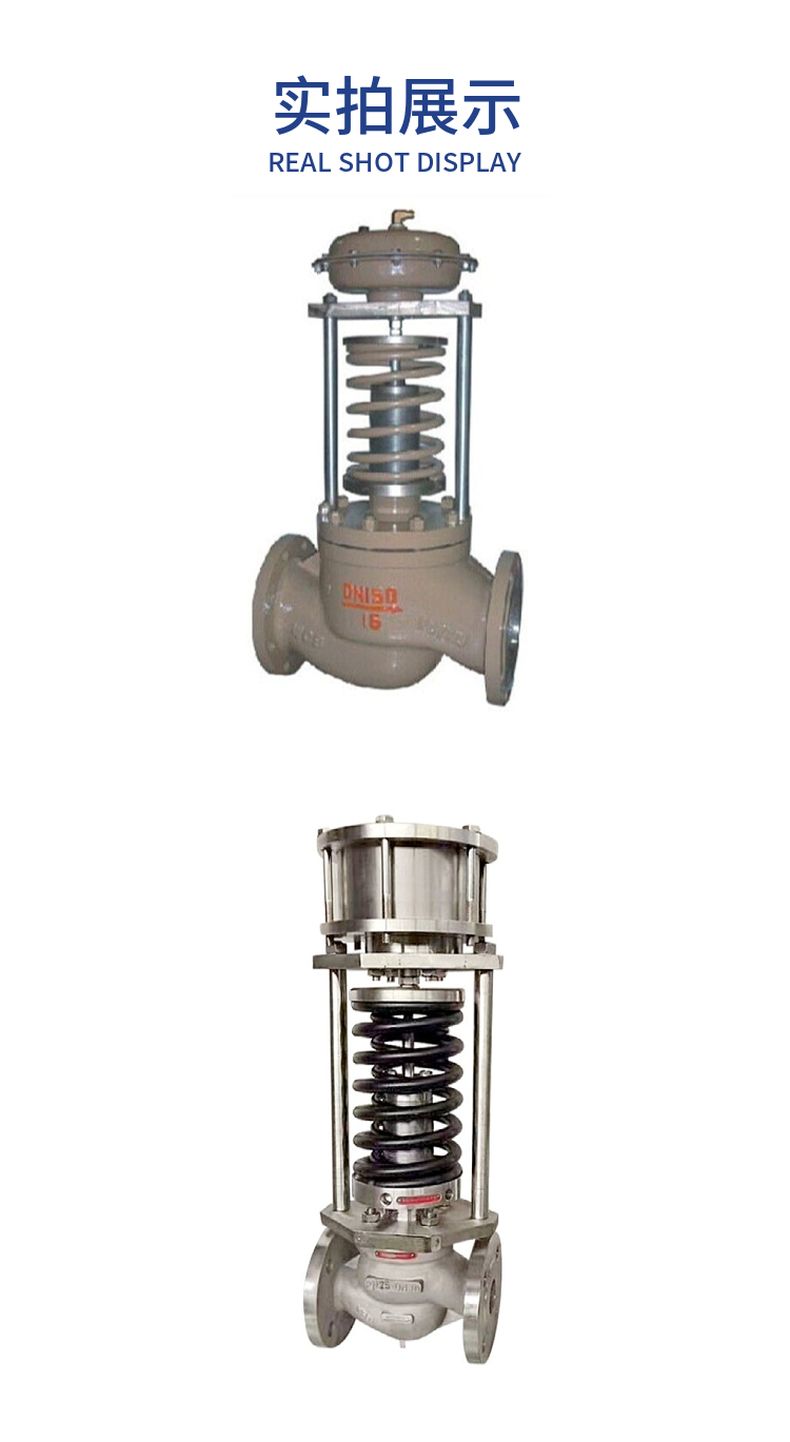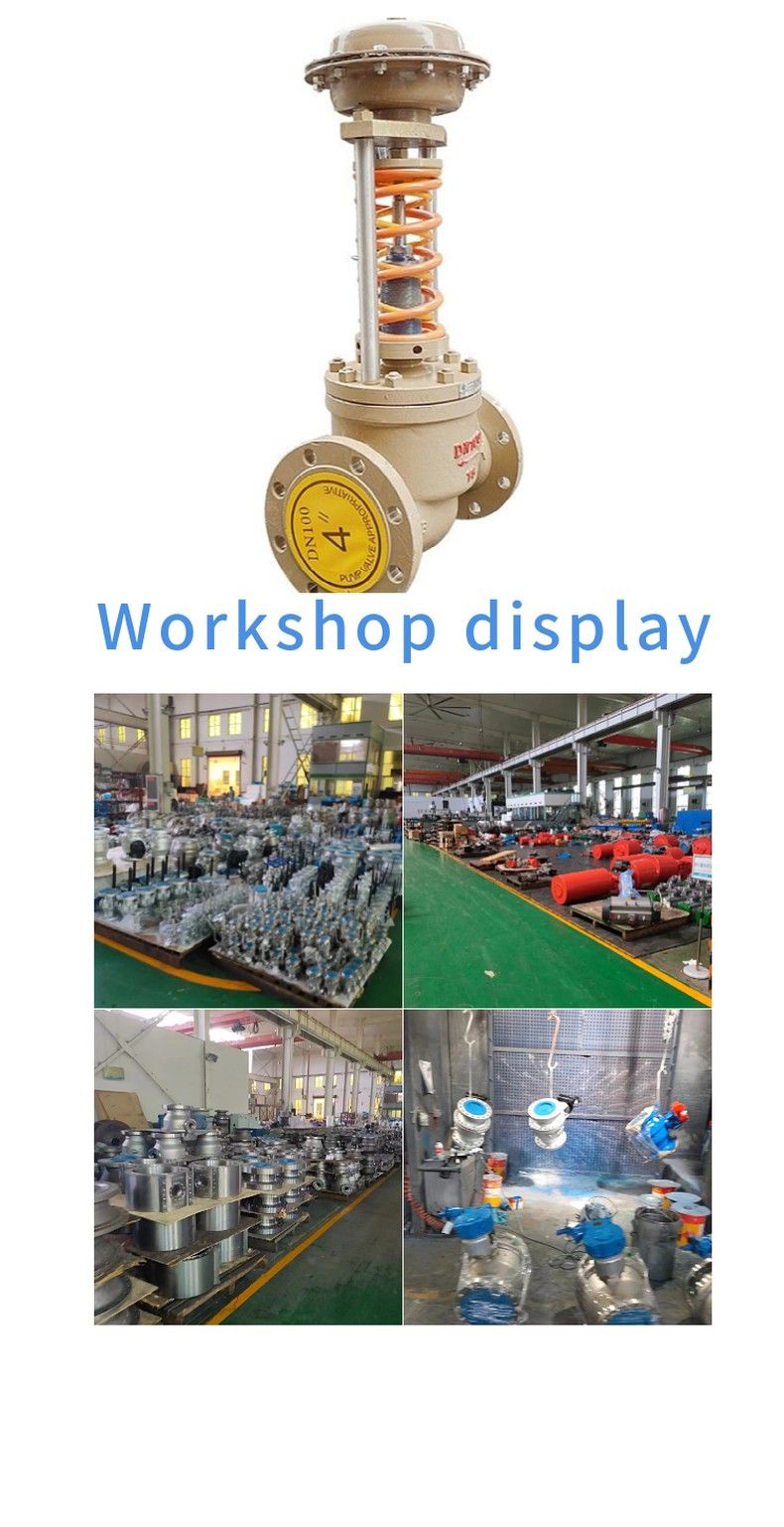ZZYP self-operated pressure regulating valve
intro
ZZYP type self-operated pressure regulating valve is an actuator product that does not need any external energy and uses the energy of the medium to be adjusted to achieve automatic regulation.
Product Features
Working in a place without electricity and gas, while saving energy, the pressure setting value can be adjusted at will during operation.
With quick-opening flow characteristics, sensitive action, good sealing performance, so it is widely used in petroleum, chemical, electric power, metallurgy, food, textile, machinery manufacturing and residential building groups and other industrial equipment in a variety of gas, liquid and steam medium decompression, pressure regulation (for post-valve regulation), or pressure relief, pressure holding (for pre-valve regulation) automatic control.
Equipped with a condenser can be used at a temperature of ≤350ºC.
Operating temperature: -20 ºC ~ 350ºC, pressure: 1.6 ~ 6.4MPa.
Technical performance
Pressure-closed type: used for pressure adjustment after the valve, when the pressure rises after the valve, the valve is closed to achieve the purpose of decompression and pressure regulation.
Pressure open type: used for pressure adjustment after the valve, when the pressure rises after the valve, the valve is opened to achieve the purpose of pressure relief and pressure regulation.
Working principle
1. The working principle of automatic pressure regulating valve before regulating valve
Automatic pressure valve before the regulating valve, its initial spool position in the closed state. When the valve pressure P1 through the spool, valve seat after the throttling into the valve pressure P2, P1 through the pipeline input membrane chamber acting on the diaphragm, the force and the spring reaction force balance when the spool position determines the valve opening, so as to control the valve pressure. When the pressure P1 before the valve increases, the role of P1 on the diaphragm is also increased at any time. At this time, the force on the diaphragm is greater than the reaction force of the set spring, so that the valve core moves away from the direction of the valve seat, resulting in the opening of the valve becomes larger, the flow resistance becomes smaller, P1 pressure relief to the valve, until the force on the diaphragm and the spring reaction force balance so that P1 is reduced to the set value. Similarly, when the pressure P1 in front of the valve is reduced, the direction of action is the opposite of the above, which is the working principle of the pressure adjustment in front of the valve.
2. The working principle of automatic pressure regulating valve after regulating valve
After the automatic pressure valve regulating valve, the position of the initial spool is in the open state. When the valve pressure P1 through the spool, valve seat after the throttle into the valve pressure P2, P2 and through the pressure guide tube input film chamber acting on the diaphragm, the force and the spring reaction force balance when the spool position determines the valve opening, thereby controlling the valve pressure after. When the pressure P2 increases after the valve, the force acting on the diaphragm of P2 also increases at any time. At this time, the acting force on the diaphragm is greater than the reaction force of the set spring, so that the valve core is closed to the position of the seat, resulting in the valve opening is reduced, the flow resistance is increased, and P2 is reduced until the acting force on the diaphragm is balanced with the spring reaction force, so that P2 is reduced to the set value. Similarly, when the pressure P2 after the valve is reduced, the direction of action is the opposite of the above, which is the working principle of the pressure adjustment after the valve.
